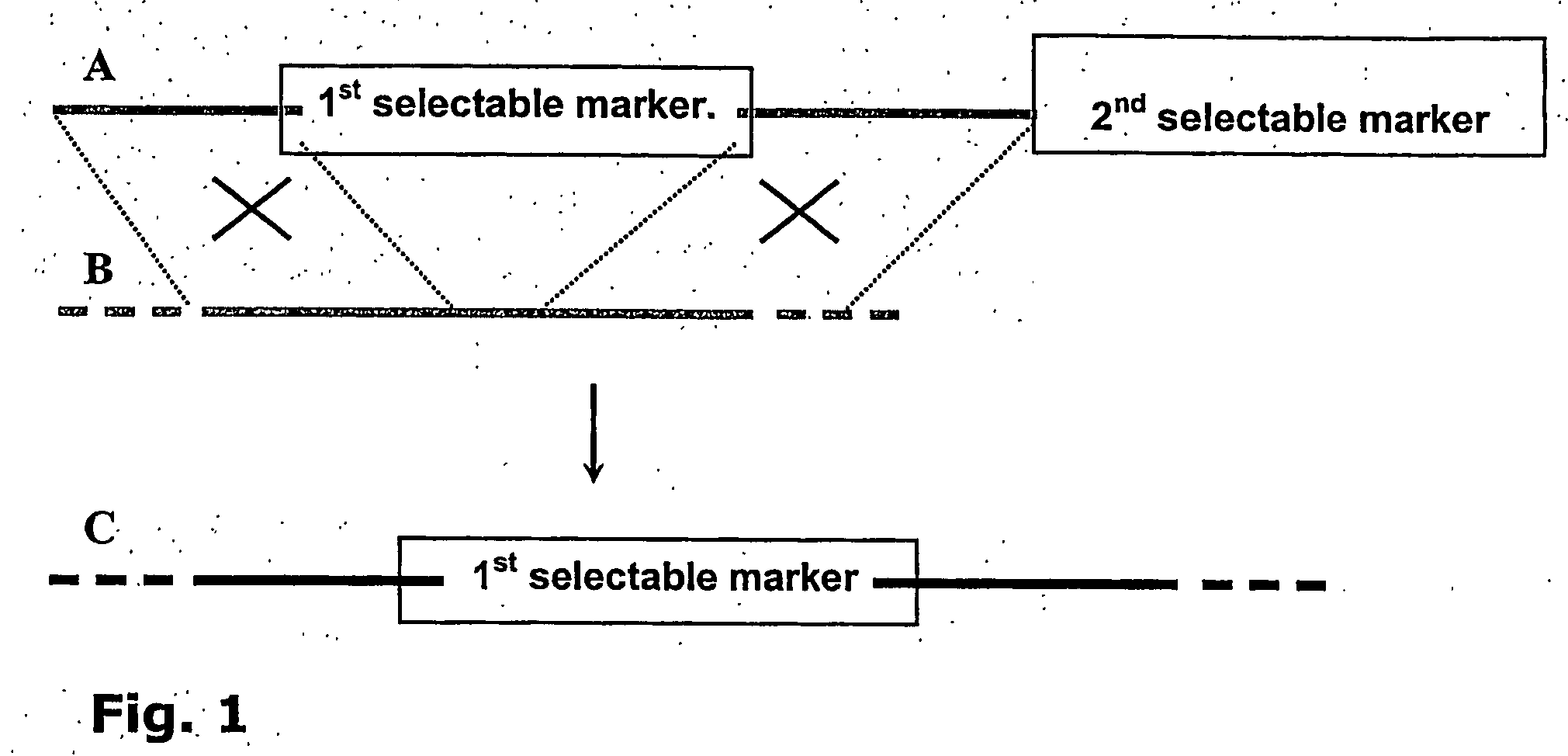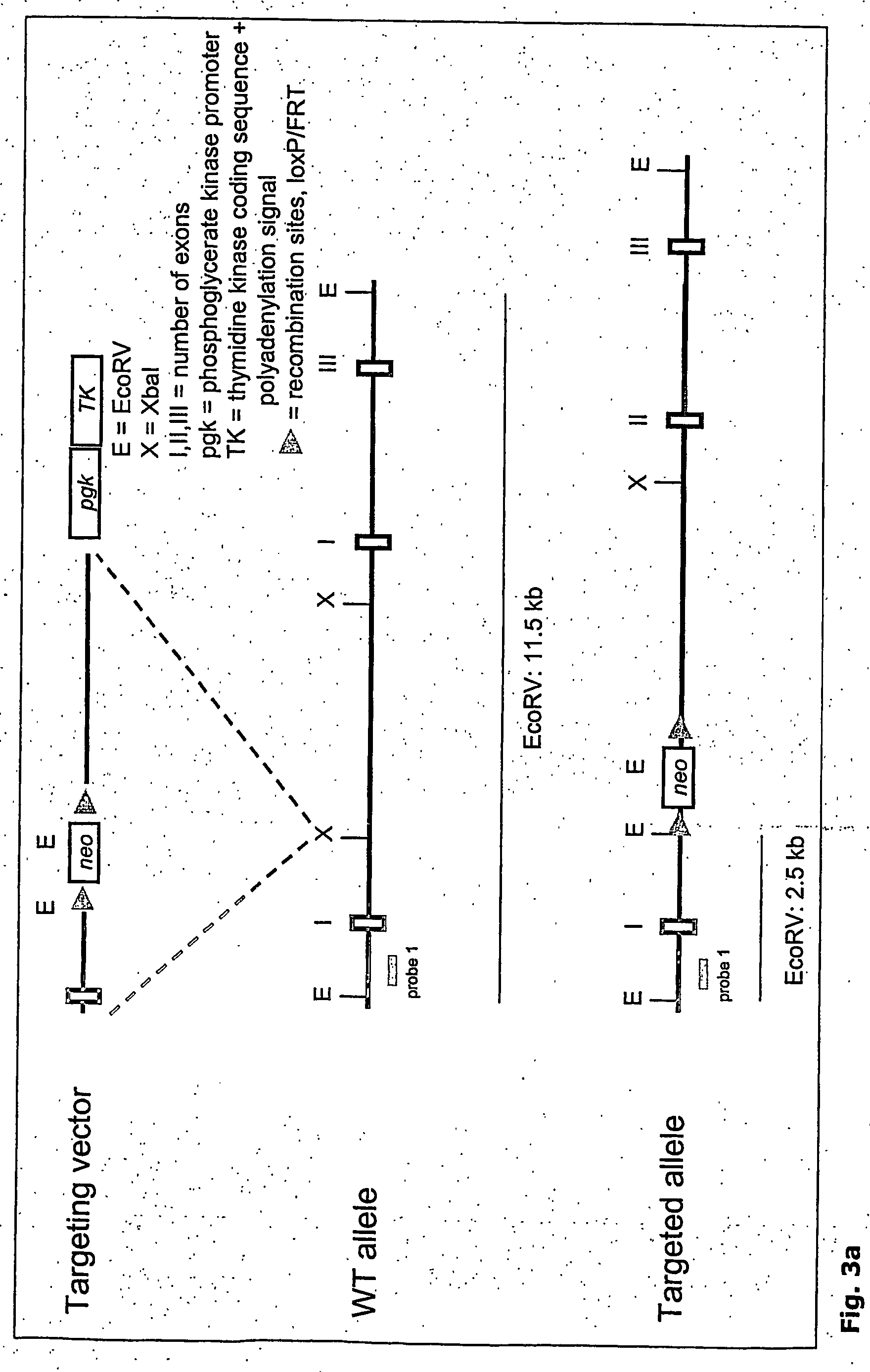Automated gene-targeting using non-toxic detectable markers
a detection marker and automatic technology, applied in the field of automatic gene targeting using non-toxic detectable markers, can solve the problems of inability to maintain germ-line transmission competence, inability to amplify es cells, and inability to inhibit under gmp standards, etc., to achieve rapid and reliable distinction
- Summary
- Abstract
- Description
- Claims
- Application Information
AI Technical Summary
Benefits of technology
Problems solved by technology
Method used
Image
Examples
example
[0118] As example for optical identification of ES clones, the fluorescent molecule ZsGreen gene (Clontech) was chosen. The Rosa locus of the mouse (FIG. 6, SEQ ID NO:3) was chosen for homologous recombination. The targeting strategy is outlined in FIGS. 3A, B and C and D.
[0119] 1. Rosa Targeting Vector: A 129 Sv / Ev-BAC library (Incyte Genomics) was screened with a probe against exon2 of the Rosa26 locus (amplified from mouse genomic DNA using Rscreen1s (GACAGGACAGTGCTTGTlTTAAGG; SEQ ID NO:1) and Rscreen1as (TGACTACACAATATTGCTCGCAC; SEQ ID NO:2)). PCR conditions were as follows: 95° C., 2 min, followed by 30 cycles: 95° C. 30 s; 60° C., 30 s; 72° C, 30 s; 72° C., 7 min; followed by 20° C., 2 min. Out of the identified BAC clone a 11 kb EcoRV subfragment was inserted into the HindII site of pBS. Two fragments, a 1 kb SacII / XbaI fragmenit (SEQ ID NO:4) and a 4 kb XbaI-fragment (SEQ ID NO:5) were used as homology arms and inserted into a vector consisting of a FRT-flanked neormycin re...
PUM
| Property | Measurement | Unit |
|---|---|---|
| injection volume | aaaaa | aaaaa |
| Capacitance | aaaaa | aaaaa |
| internal diameter | aaaaa | aaaaa |
Abstract
Description
Claims
Application Information
 Login to View More
Login to View More - R&D
- Intellectual Property
- Life Sciences
- Materials
- Tech Scout
- Unparalleled Data Quality
- Higher Quality Content
- 60% Fewer Hallucinations
Browse by: Latest US Patents, China's latest patents, Technical Efficacy Thesaurus, Application Domain, Technology Topic, Popular Technical Reports.
© 2025 PatSnap. All rights reserved.Legal|Privacy policy|Modern Slavery Act Transparency Statement|Sitemap|About US| Contact US: help@patsnap.com



